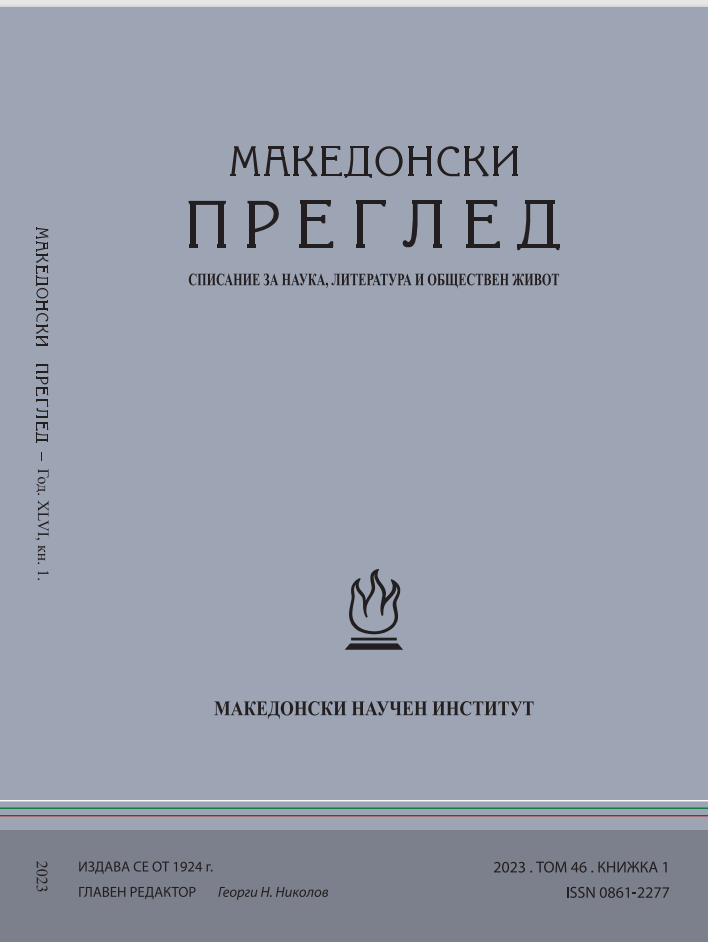
We kindly inform you that, as long as the subject affiliation of our 300.000+ articles is in progress, you might get unsufficient or no results on your third level or second level search. In this case, please broaden your search criteria.

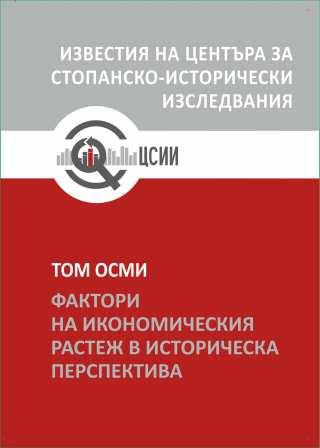
Recently, with the economic and political problems especially in developed countries and the Covid 19 pandemic, the place of the state in economic development is being debated once again. This presentation focuses on the simple ratio revenues as percent of GDP and summarizes the recently collected evidence about the growing role of the states in Europe and elsewhere during the last five centuries. It shows that revenues of states as a percent of GDP have been rising since the sixteenth century. This powerful trend began in Europe and has spread to the rest of the world including many of the developing countries since the second half of the nineteenth century. Historical examples going back to the era before the Industrial Revolution suggest that economic development took place not in countries where the state was small and weak, but in countries where a strong state supported economic development.
More...
The education system after the Liberation of Bulgaria in 1879was nationalized and centralized. As a result, the number of literate Bulgarians increased, but the system became detached from the social necessities and began to work in its own favor. At least for the considered period of 1879–1912, no visible positive consequences of the government education policy on the overall economic development of the country can be established, i.e. education fails to become a factor accelerating economic modernization. The underdeveloped agrarian economy of Bulgaria turned the primary schools literally into tombs for teachers and students, while the specialized professional schools produced mainly civil servants and clients of the corrupt political system. Compulsory education in a certain sense emerges as a tax that does not bring a prospect of improvement in the material situation of ordinary people, but strengthens their poverty. The general conclusion of the historical reconstruction is that in the conditions of post-liberation Bulgaria, education perhaps brings some social benefits, but the facts convincingly show that the thesis of its universal benefit cannot be accepted.
More...
The purpose of the present study is to show the features, essence and meaning of the press, organized and supported by the idealism and patriotism of the young, highly educated and economically far-sighted Bulgarian intelligentsia. The Bulgarian agricultural periodical and book press from the last two decades of the 19th century introduces the novelties of modern agriculture, highlights the advantages of the economy based on scientific knowledge and the use of agricultural machinery. Economic reforms are the work of an enlightened society that respects and values agricultural labour. The seal suggests the importance of constant, daily work and emphasizes personal initiative. The conservative rural population did not sufficiently benefit from the knowledge and ideas for rational organization of the farm that the agricultural press offered. A certain apathy about the press also shows part of the agricultural intelligentsia. Incorrect subscribers and officials create difficulties for its normal functioning and distribution. The published books do not receive the necessary attention due to the mistrust of the peasants towards the people of intellectual work. All this limits the usefulness of the press and slows down there form process. Newspapers, magazines and books on agricultural issues from the last two decades of the 19th century represent a national treasure that has not lost its relevance. The chronological, systematic, comparative and analytical method was used for the research.
More...
The Institute for constitutional Ministerial criminal liability in Bulgaria is based on article 155-159 from the Constitution of the Bulgarian Principality, adopted in 1879. It provides for a specific procedure through which the members of the government to be judged outside of the civil courts. From 1880 to 1923, through this procedure four trials were held. In this case, we focus on the work of the Second State Court (1910–1914). He explores potential law violations committed by ministers from the popular liberal government of Bulgaria, in the period 1903-1908 years. Later, in1913 year, the indictment, was published. Sixteen charges (individual and collective)have been brought against the former Minister of Trade and Agriculture N. Genadiev. In their analysis, two types of accusations emerge. In some of them, his decisions were approved in the Council of Ministers and in the National Assembly. The author of this article concludes that there should be no or few convictions here. In the other case –without the sanction of a higher authority, the violation of the laws by the former minister should end with more serious convictions. However, the third state court did not reach the end – due to a number of political reasons, in 1914 a decision was made to remove the responsibility from the accused former ministers.
More...
The article seeks the importance of foreign trade for the revival of the Bulgarian economy in the decisive stage of the Second World War at the end of1944 and in 1945, when Bulgaria was in international economic isolation. The effect on Bulgaria's commercial and economic contacts of the restrictions of the American and English law on "trading with the enemy" imposed on the satellites of the Third Reich is traced. Western companies' fear of breaking the law made Bulgaria's foreign trade with Western European countries almost impossible at the end of 1944 and in1945. Against this background, the attempts of the first OF government to stimulate industrial processes in the country by resuming Bulgaria's foreign trade relations with Western European countries are considered, despite the orientation towards the USSR and the sanction measures of the Western allies. Archival documents from the funds of the Ministry of Trade and Food, the Ministry of Foreign Trade and the Central Committee of the Bulgarian Communist Party, as well as scientific publications dealing with Bulgaria's foreign trade relations at the end of 1944 and in 1945, were brought to the aid of the study.
More...
The apparent lagging behind of the socialist economy in the late 1970s forced the government to take steps towards expanding the possibilities of exercising private initiative in the various areas of the economy in the 1980s. All reformist attempts are confronted with the limited possibilities of the system. Experiments with mixed state-private forms of economic activity also do not achieve the expected result. The range of activities and persons admitted to private business is gradually expanding. This is mainly done through the issuance of new regulations. Key in this respect remains the issue of wage labor, which for ideological reasons is not allowed outside the family community. The study examines the legal regulation of private practice in trade, services, and retail production, excluding agriculture and the liberal professions. In the early 1980s, there was an intensification of the state's policy of stimulating private economic activity in the three spheres, given the lack of sufficient satisfaction of citizens with consumer goods and services. The Communist Party, which defines the general directions of development of the Bulgarian economy, falls into a vicious circle between the needs of society, the desire to satisfy them and the limited capabilities of the political regime. In the 1980s, two periods emerged in the policy of the State in this respect: from 1980 to 1986 and from 1987 to 1989. In the first period, the following main trends emerge: expanding the circle of persons allowed to carry out private commercial activity; the range of activities carried out is expanded too; as the main participants in private business and small production, in addition to parents and children, it is allowed to hire close relatives up to the second degree. At the end of this period in 1986, about 20 % of the country's population received additional income from private activities, but almost half of this income is from renting out premises, while persons engaged in trade, services, and retail manufacturing made up only 1% of the population. In the second period, a new step is made by regulating the performance of private work by citizens in five main areas: transport, pedagogical, administrative-legal and design services, and development of software products and software services. Again, however, the opportunities for hiring individuals are limited within the family circle. It was only with the issuance of Decree 56 on business activity at the beginning of 1989 that conditions for transition to a capitalist market economy were created.
More...
We challenge the view that Centrally Planned Economies functioned well until the mid-1980s, delivering high economic growth and better living standards. As part of a broader research effort into living standards under state socialism, this paper focuses on nutritional evidence. Judged by calorie intake, we show that only in the 1970s did Bulgarian living standards surpass levels achieved already four decades earlier. Our findings are particularly discomforting for the rural population which was the big loser of collectivization and forced industrialization policies after 1946. Big Push industrialization reduced nutritional welfare in addition to coming at high human and societal cost.
More...
The paper provides an analysis of the economic growth in Bulgaria over a forty-year period, which includes the last two decades of the command system and the time from the beginning of the transition to market economy to the 2009 crisis. It discusses the specificities in the chain growth rates of real GDP and real GDP per capita in the various stages of the period, measured by using data from different sources. The dynamics of the production and the income structure of GDP are characterized and the most important structural changes are highlighted. The main focus of the study is on the supply-side determinants of economic growth. To this end, the growth rate of real GDP per capita is decomposed into growth rates in employment and the impact on GDP growth of changes in employment, capital accumulation and total factor productivity is assessed. In the course of the study, the existence of three periods in the dynamics of GDP, distinguished by internal heterogeneity, is proved. Changes in the sectoral structure are generally in the direction of increasing the share of services and reducing the share of agriculture, with relatively smooth changes in the share of industry. The income structure of GDP during command system was relatively stable and dominated by labour income, while afterwards the share of the capital income prevailed. Changes in GDP per capita depend mainly on average labour productivity, while the contribution of labour was insignificant in the first period, it was relatively high positive or negative in the first decade of transition, and persistently positive after2000. The relative importance of growth factors has varied over time, with capital leading in years of relatively high growth rates. The impact of total factor productivity is positive in most years and negative at the beginning of the transition and at the end of the period, combined with alternating negative and positive contributions from labour. Economic growth was intense in certain years during socialism and at the beginning of the third period, while during the rest of the time it was of extensive nature.
More...
Here we consider currency reforms, or the compulsory currency exchanges by governments, which were quite common in the first half of the twentieth century. We analyse the effects on inflation of the three currency reforms implemented by the communist regime in Bulgaria after WWII, and of the one that took place during the transition. We provide new evidence on the implemented currency exchanges and compile a time series on the quantity of money in circulation in communist Bulgaria. The collected data and facts show that, contrary to the announced aim to tame inflation through the reduction of liquidity, the three reforms conducted in communist Bulgaria had almost no effect on both money in circulation and inflation. Instead, price stability was achieved through price controls. We emphasize the fact that the growth of money in circulation followed a strong positive trend and exceeded disproportionately the official inflation and output growth. All this generated enormous price pressure and led to the unprecedented inflation rates experienced after the regime collapsed and prices were liberalized. In the following years, high inflation was additionally nurtured by the excessive growth rates of the money supply in the early stages of the transition. Our observations corroborate the fact that the introduction of the currency board arrangement in the summer of 1997 put an end to the high inflationary periods as restrictive monetary and fiscal policies were adopted. We put forward the idea that in 1999, the fourth currency reform played a role in curbing inflation expectations by reducing the scale of price variation. The combined findings of all four reforms confirm the claim that a new currency cannot serve as a tool for combatting inflation per se. It can only be ancillary to reforms establishing fiscal discipline and prudent monetary policies. A side but important finding from the study is that no revaluation of fixed assets was conducted in the 1952 reform, while all other values were considerably reduced. This means that the calculated depreciation was disproportionately higher than the other cost items, which led to significant overestimation of the reported output volumes in the subsequent years and the economic growth rates for 1952–53. Finally, based on the official price-conversion rules, we propose an algorithm for converting values across the different periods.
More...
The historical development of the Agricultural Fund in Svishtov during the period spanning from the Liberation to the establishment of the Bulgarian Agricultural Bank has yet to be explored as an independent topic. It has primarily been a part of broader research addressing the city's banking and credit history. This article initiates a comprehensive study of this significant institution. It outlines the principal functions and services provided by the fund, highlights both its strengths and weaknesses in development, and assesses its place and role in the local economic landscape. An analysis of the available data reveals that during this period, the Svishtov Agricultural Fund held a pivotal position in the economic life of the region. It played a vital role in introducing modern agricultural techniques and innovative crop production methods, as well as animal selection practices. These advancements led to increased productivity and improved incomes for the local population. With the fund's support, the region flourished as a key agricultural center.
More...
Prof. Dimitar Dobrev was born in the city of Kotel in 1888. He received his higher education in the city of Leipzig (Germany), and later in 1911 defended his doctoral dissertation in economics at the University of Erlangen (Germany). As one of the most famous scientists in the field of accounting at the beginning of the 20thcentury, Prof. Dimitar Dobrev was one of the first authors who pay attention to the goodwill in his scientific works. We believe that the development of the goodwill as an accounting category should be considered in parallel with the development of Bulgarian accounting science in a historical aspect. The main purpose of this article is to analyze the development of Prof. Dobrev's views on goodwill as a specific accounting object, and on this basis to draw a parallel with the modern "drivers" of the value and growth factors in the enterprises. The research methodology is based on the publications of Prof. Dimitar Dobrevin the period 1920-1950 as the main source of information regarding his views on goodwill. The article also compares the views of prominent scientists from Western Europe who worked during this period. We defend the thesis that the application of the scientific approach to goodwill by Prof. Dobrev leads to a theoretical substantiation of the evaluation and presentation of good will in the balance sheet. Based on the analysis of Prof. Dobrev's publications, three periods have been identified in the development of the concept of goodwill. The good will is presented as an intangible productive and profitable factor that generates income and distinguishes an existing business from a start-up. In this aspect, a parallel is drawn with the modern understanding of business value and growth factors in the enterprises, base don business models that are built on the basis of intangible factors such as goodwill.
More...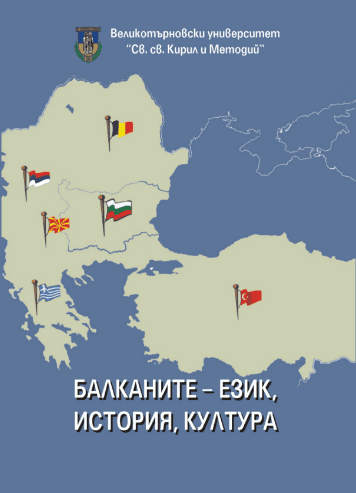
At the beginning of the 21st century, two parallel and opposing processes took place – integration into the Euro-Atlantic structures and Balkanization. They are the result of the desire of the countries in the region to improve their socio-economic development and the ambition of some of them to strengthen their recently found identity. Along with this, a number of typical regional problems will determine the future of the countries in the long term. The lost identity of the people leads to internal weakness, the influence of external factors, unemployment, decreasing birth rate, quality of education, and emigration – these are some of the problems which have their specifics in the region and are of interest to the present research.
More...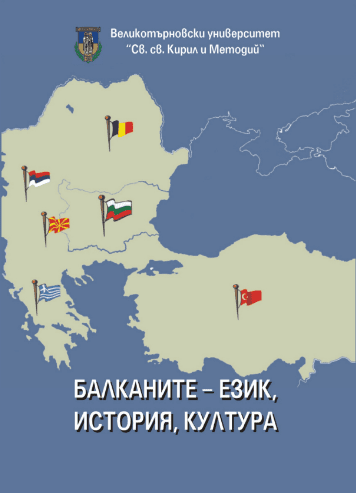
This article analyzes the content of the bilingual edition of the Dobruja newspaper, which was published between 1919 and 1924 in Bazargic (present-day Dobrich). Until 1921, it was published in Romanian and Ottoman Turkish, and later only in the latter. Dobruja is important because it was the first bilingual newspaper of the Muslim community in interwar Romania that existed for a long time. Also, the main authors of the articles published in this newspaper were important figures of the community, such as Halil Fehim (the mufti of Caliacra County), Mehmet Niyazi (the national poet of the Tatars and a Turkish language teacher at the Muslim Seminary in Medgidia), and Ibrahim Themo who had an Albanian background and was an important leader of the Young Turks. After presenting the context in which the Dobruja newspaper came out, the article analyzes the content of bilingual editions from three perspectives: the demands that the Turks and Tatars made before the Romanian authorities, the organization of the community, and international developments. The author points out that the main idea encountered in the articles published in the newspaper is that the Turkish and Tatar minority was a safe one for the Romanian state because it had no territorial claims. This message was important, given that Southern Dobruja had an ethnic composition in which the Romanian ethnicity was a minority, and that the territory was claimed by Bulgaria. Thus, the reiteration of this by the elites of the Turks and Tatars was necessary for the attempts to obtain the satisfaction of some demands and support in the initiatives to improve the situation of the community. The Dobruja newspaper was the means by which this message was conveyed.
More...
This paper deals with the use of the visual in representing politics in the newspapers and journals in Bulgaria during the late 19th and early 20th centuries. This is done by using data from one illustrated journal – Ilyustratsia Svetlina (Illustration Light), and from one humoristic newspaper – Balgaran. The question about the role of the visual images in the coverage of politics and politicians is discussed, as well as the use of political cartoons as a powerful way of political communication. The author seeks to answer the question of whether in Bulgaria, like in Europe, this period was transformative for the way political themes were covered.
More...
Industry remains a catalyst for progress and a driving force for our future. Today, it provides 50 million jobs in Europe, or 20% of the workforce, accounting for more than half of exports. The last quarter of the twentieth century was characterized by colossal qualitative changes in the development of productive forces, affecting the entire world economy. The leading industrial powers entered a new post-industrial stage of their development, also known as the “knowledge-based economy.” Entrepreneurial activity in the border regions of the most economically developed CEE countries contributes to the development of integration processes and to the integration activity of cross-border territorial production complexes.
More...
The study examines the development of architecture and urban planning in the decades of Bulgaria’s strongest Europeanization after the liberation from Ottoman rule. In 25 years, Bulgaria was transformed from an oriental province into a country with a European look and style, and its major cities successfully approached the progress of Central European capitals. The work and lives of the most important foreign and Bulgarian architects who contributed to this wave of modernization are examined in detail. The study is a serious investigation aimed at both a specialist audience and an interdisciplinary readership.
More...
Martin Ivanov, Book review
More...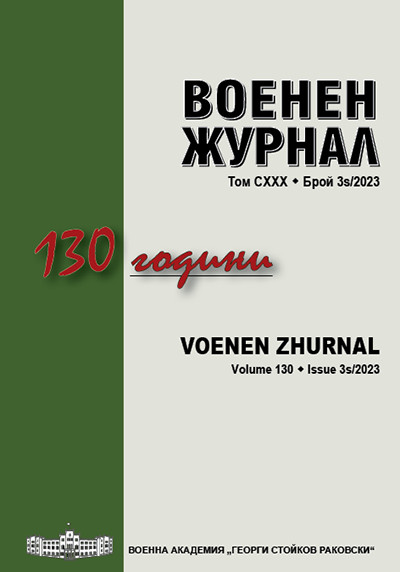
The 8th Primorski Infantry Regiment is one of the famous Bulgarian regiments. It took an active part during the wars for national unification of Bulgaria. During the Second Balkan War, while being part of the Second Brigade of the 4th Preslavska Infantry Division, the Regiment fought in Macedonia in the area around the Zletovska River (June 17 – 23). Primorci distinguished themselves although facing an enemy numerically superior to them in the battles at Ratavica, „Razbiy glava“ Height, the villages of Neokazi and Drenak, they withstood the enemy’s pressure against Mount Ozren and managed to push out the Serbs with a bayonet attack at Beli and Yastremnik. Despite being very tired in the context of the continuous fighting with the Serbs, the soldiers of the 8th regiment continued to stand at their combat positions until their final withdrawal to the Kalimansko Plateau.
More...
The military brigades were formed on the eve of the Second Balkan War from the population of the newly liberated regions of Serres, Drama and Edirne. Their aim was to increase the numbers of the Bulgarian Army and to exploit the demographic potential
More...